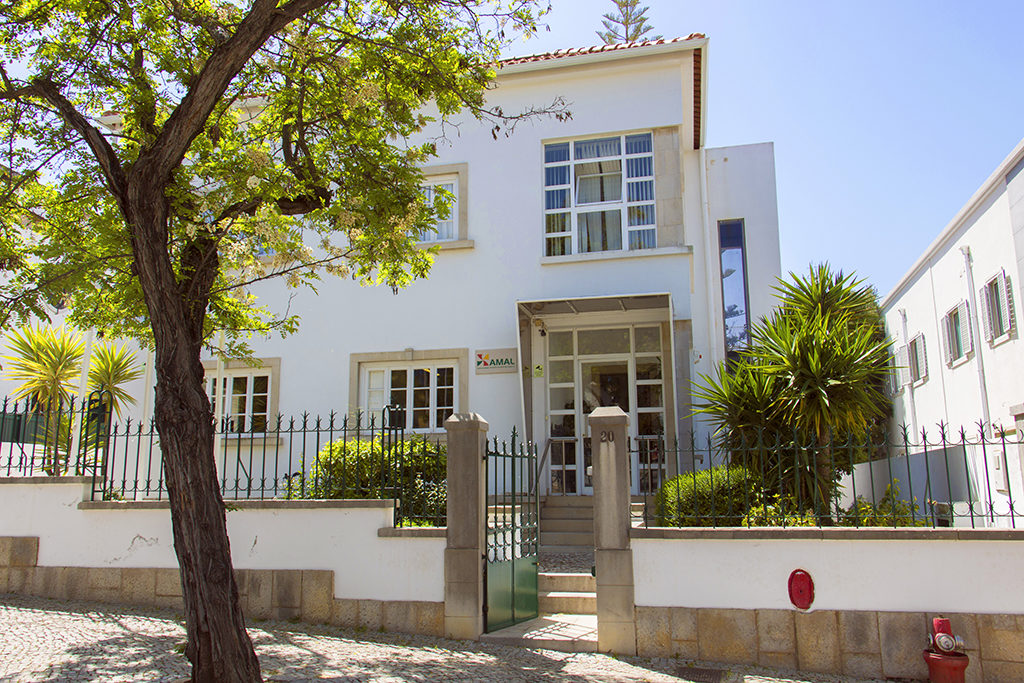2023 will celebrate the 10th anniversary of the CIM (12th September) and the 25th anniversary of the 1998 referendum on the regionalization of the Continent (8th November). I am in favor of the regionalization process as a concrete application of the more general principle of political decentralization of the State.
Meanwhile, we have already published a series of laws that appear to be in line with this guidance, namely:
– Laws nº 10/2003 and nº 11/2003 of 13 May, which provided for the voluntary creation of associations of municipalities at sub-regional level with general purposes,
– Law nº 45/2008 of August 27th and DL nº 68/2008 of April 14th, which redesigned the territorial scope of inter-municipal entities and established the institutional framework that makes up the multi-level governance model in mainland Portugal,
– Law nº 73/2013 of 3 September which establishes the financial regime of local authorities and inter-municipal entities and law nº 75/2013 of 12 September which establishes the legal regime of local authorities, approves the statute of inter-municipal entities and establishes the legal regime for the transfer of powers from the State to local authorities and inter-municipal entities and approves the legal regime for local associations,
– Law nº 50/2018 of 16 August which approves the framework law for the transfer of powers to local authorities and inter-municipal entities; this is a transfer with a universal nature embodied in the approval of legal diplomas of a sectoral scope relating to several areas to be decentralized from the direct and indirect administration of the State (21 sectoral transfer diplomas are planned),
– The Resolution of the Council of Ministers of November 17, 2022 determined the beginning of the process of transferring and sharing responsibilities of peripheral services from the direct and indirect administration of the State to the Regional Coordination and Development Commissions (CCDR); This process of transfer and sharing does not prejudice the decentralization of competences to intermunicipal communities and metropolitan areas.
The decentralization process is, in general, relatively peaceful, at least on a political-doctrinal level. However, on a technical and financial level, the calculation of the direct and indirect costs of each transfer always raises many doubts, as can be seen today with transfers to local authorities and supra-municipal entities within the framework of law no. 50/2018 of August 16th.
But, perhaps more importantly, the transfers of responsibilities, competences and resources to sub-national levels need to be reviewed and regrouped at a second stage, otherwise we risk dispersing public expenditure with low returns or dubious reproduction in a country that needs to protect its public and private debt levels.
Now, this is where the regional and sub-regional levels of administration come into play within the framework of multi-level governance, whose variable cooperation and geometry leads us to speak of points of regionalization and sub-regionalization. Let us look, then, at the main factors that condition regional policy and the regionalization process.
Firstly, the major transitions of this decade need more fiscal, monetary and capital union at the European level. Without this macroeconomic policy of a federal nature, it will always be difficult to have a more robust post-enlargement cohesion policy capable of preventing, in real time, the territorial and regional asymmetries that will form as a result of those transitions. In other words, without the support of this European supranational regionalization rearguard, it is more difficult to have a subnational regionalization that is effective, efficient, equitable and effective.
Secondly, the differentiated application of the principle of descending and ascending subsidiarity between levels of government and administration determines not only a differentiated regional policy, but also a distinct methodology for interpreting, transferring and applying European regional policy in the subnational context. This means that the regionalization points of each country are quite different and, therefore, also the performance of European and national regional policy.
Thirdly, the Regional Operational Programs (POR) are, or should be, the meeting point of each regional policy, if we want, a meta-platform for the integration and regulation of policy measures and the assessment of their impact within each CIM and between CIM; Furthermore, they are also places for inter-territorial consultation and within their scope solutions for the delegation of competences and financial engineering can be designed for the entire region and its CIMs.
Fourthly, intermunicipal cooperation is fundamental in the operational planning and implementation of non-tradable goods, in particular, in the aggregate supply of public goods and common goods, as well as in the search and coordination of technical and financial engineering solutions that associate low cost and high operational and financial efficiency.
Fifthly, the transfer of responsibilities and competencies will only become effective if institutional and business cooperation manages to achieve the transfer of value from new public and common goods to the regional added value and its price system, in particular, to the chains value of the local and regional production system.
Sixthly, the set of relationships referred to here is part of a framework of power relations in multilevel governance; there are no uniform solutions for the mosaic of regional politics, rather a dynamic balance between the national interest, the regional/sub-regional interest and the municipal interest, in addition to all the sectoral interests that form the regional corporate constellation.
Having said that, and bearing in mind that we will be celebrating 25 years since the referendum on regionalization and 50 years since the 25th of April, my perspective is towards a more procedural and pedagogical approach to the political process of regionalization which, over the next two years, will You could follow the following steps:
– Complete the ongoing process of transferring duties and powers provided for by law no. 50/2018, without prejudice to subsequent adjustments.
– Rehearse the experience of sub-regionalization with the CIM, moving towards and practicing a 2nd degree autarchic federalism, with a view to the aggregated supply of public, common and collaborative goods (BCC), multi-product grouped management and the best organization of networks regional business extension.
– Initiate a reform of regional public administration, towards the formation of a regional executive council and the programmatic reinforcement of the Regional Operational Program (POR), following the RCM of 17 November 2022; In this light, proceed with a new division of labor with the CIM through a regrouping of responsibilities and competencies that, through delegation, cooperation and contractualization, can be established with the same CIM.
– Finally, having taken stock of sub-regionalization, let us then put to public discussion whether it is justified to take the next step, assessing whether there are objective conditions to comply with the general principle of administrative regionalization, that is, to do more and better with any less.
Final Notes
In the end, and whatever the division of competences between the European Union, the member states and subnational entities, we are obliged, because of the PRR and the 2030 Partnership Agreement, to establish greater regional dialogue between the CCDR, the CIM and the Municipal Chambers (CM), which could take the form of a territorial development contract for the CIM, as has already happened previously with territorial pacts, apparently without much success.
At the political-institutional level, the regional political ecosystem can follow three formulations: a CCDR, with a president elected, directly or indirectly, a regional executive council and a regional advisory council (minimalist regionalization), an Intermunicipal Regionalization with a mission structure executive and an Intermunicipal Assembly, a Regional Authority, with an elected government and a Regional Assembly (administrative regionalization).
Here I leave a transitional operating system proposal for the regional level that seems compatible with any of those solutions:
– Form a Regional Executive Council chaired by the president of the CCDR and materialize a new architecture of regional services based on a digitally based territorial analytical platform based at the CCDR,
– Based on the ordering and planning policy guidelines and the Regional Operational Program, formalize a contract for the delegation of powers from the central and local administration to the sub-regional capitals of the CIM within the scope of framework law no. 50/2018 and the RCM of November 17, 2022;
– This delegation of powers would open the door to a Territorial Development Contract in each CIM and to a level of CIM subsidies, with a view to complying with the framework law for the transfer of powers and DL nº 102/2018 of 29 November and appointing, for this purpose, a dedicated mission or administration structure in each CIM;
– Create in each NUTS II a digital innovation hub, a school of arts and technologies and an association of young entrepreneurs with the mission of supporting the digital transformation of society, promoting the digital literacy of citizens and training a generation of young entrepreneurs of the era digital.
The next ten years will be very demanding and territorial cohesion will take on surprising shapes, formats and contents that we cannot even imagine at this time.
For this reason, the spirit that presides over the formation of the Partnership Agreement must be very present at the level of multi-level governance and, in particular, in decentralized territorial cooperation. I want to believe that the CCDR/CIM/CM regional dialogue can bear fruit within the framework of the PRR and the Partnership Agreement or PT 2030.
I even think that a Regional Strategic Council should be created in this context with the purpose of designing development scenarios and, in this context, outlining the most appropriate regional, sub-regional and inter-municipal commitments.
Once again, it is a question of converging responsibilities and competencies and in this alignment preparing a functionalist and pragmatic regionalization of small steps, but participated and highly scrutinized. If everything is done in the clear, regionalization will occur, naturally, throughout the decade without any major surprises.
Finally, and as a warning, if the new regional and sub-regional public expenditure does not interact positively with the local and regional production system, transferring value from non-tradable goods to the price system, the entire regional building under construction could, medium term, be called into question and collapse due to lack of strategic, productive and financial consolidation.
Author António Covas is a Retired Full Professor at the University of Algarve


















Comments